Now do the same with these words.
1. cheerful a. advice
2. delightful b. answer
3. frightful c. character
4. harmful d. illness
5. hopeful e. mess
6. painful f. news
7. restful g. night
8. spiteful h. remarks
9. truthful i. side-effects
10. useful j. weather
Vocabulary Exercises
A. Fill in the gaps with one of the words given in the box. ***
| complaints expensive black licence centre companies drivers price examination destination |
By Taxi
Travelling around London by taxi is (1) __________. There are numerous taxi (2) ___________ operating throughout London. The majority are licensed and fair, however, do be careful as there are always one or two ‘taxi’ companies which have no (3) ___________ and no insurance.
Black cabs are known throughout the world and are often seen as the most knowledgeable and honest of all taxi (4) ____________. In order to obtain a licence for a black taxi the driver must pass an (5) ____________as ‘The Knowledge’. It is a test on all streets throughout central London. Important points to know about (6) __________ cabs:
· they are available 365 days and nights of the year, although there is an additional surcharge on Sunday, Bank Holidays and late at night, which can double the (7) ___________ of the journey.
· they only have to take you within a radius of six miles from the (8) ___________ of London, although you may be able to negotiate a longer journey, especially to an airport.
· in theory, they cannot refuse to take you to your (9) ____________ if it is within the six-mile radius of the centre, if you are sensible, and the yellow light is on indicating availability.
· each taxi has a licence plate inside and outside the taxi so if you have any (10) ___________ you know who to complain about.
B. Find the words in the text which mean the following and write them in the blankes..
1.A car with a driver that you pay to take you somewhere.
______________________
2. The place that someone or something is going to.
______________________
3. The thing that is measured in minutes, hours, days, years, etc. using clocks.
______________________
4. Someone’s or something’s name put on an official list.
______________________
5. A public road in a city or town that has houses, shops, etc. on one or both
sides.
______________________
6. The amount of money you have to pay for something.
______________________
C. Fill in the blanks with one suitable word from above. Make changes if necessary.
Advantagesof black taxis to ordinary (a) ____________ companies
· the driver is more likely to know how to get to your exact (b) _________, without assistance, by the quickest or shortest route.
· the prices are fixed by the distance and or the time of the journey and the meter is clearly visible at all (c) ___________ .
· each taxi is (d) ___________and licensed.
· taxis can be stopped in the (t) ___________ when the yellow light on the top of cab is on.
· you do not have to ask for a (f) ___________ when you get in, the meter shows your change as your journey progresses.
D. Write the opposites to the following words. Then use these words to fill in the gaps.
1. white – ___________________________________________
2. down – ___________________________________________
3. sitting – ___________________________________________
4. unusual – ___________________________________________
5. after – ___________________________________________
6. less – ___________________________________________
7. illegally–___________________________________________
Disadvantages of black taxis compared to ordinary taxi companies
· (1) ___________ taxis are usually more expensive – they can be (2)________
to twice the price for long distances, for example to airport.
· if there is congestion a black taxi may be (3) ________ with the meter
continuing to run whereas a (4) __________ taxi will have quoted you a fixed fee for the journey in advance (always ensure you have arranged this (5) _________ getting into the taxi).
· ordinary taxis can be much (6) ___________ readily available for long distances.
· ordinary taxis cannot be stopped in the street – (7) ___________.
Grammar Focus
Conjunctions
A.
| ü These words show the connection in time; answer the question When? as The lorry hit us aswe were running the corner. when I’ll tell her when I see her. while They arrived whilewe were trying to phone them! since Where have you been living since you came to England? till/until Could you keep an eye on things until I get back, please? before I hope he gets here before the train leaves. after I’ll see you here afterI’ve been to the bank. as soon asPhone us as soon as your plane gets in. ü The difference between when and while is that whileemphasises the fact that the two actions happened at the same time: The band played while the ship went down. When I came into the room, she left. ü Since has two meanings: Time – I haven’t smoked since I was ill in 1986. Reason – Since you’re going into town, could you get me some stamps? ü Usually the since clause comes first in sentences where it gives the reason. |
B. How many people caught the train?
Sue arrived at the station as the train left.
Steve arrived at the station when the train left.
Alex arrived at the station before the train left.
John arrived at the station after the train left.
Answer: _____________________________________________________________
C. Complete these sentences with one of these words or phrases:
| as when while until before after as soon as |
You will need to use each one once. There is only one way to complete all the sentences so that they all make sense.
1. I’ll ring you ____________ I get home.
2. We can do anything ____________ the doctor arrives.
3. I rang you ____________ I heard because I knew it was urgent.
4. Have you settled down ____________ you retired?
5. He walked in ____________ the clock struck ten; it was perfectly timed.
6. We might as well have a cup of tea ____________ we are waiting.
7. I’ll give you a lift if I get home____________ you set off.
8. We arrived ____________ everyone else had left. It was deserted.
D. Fill in the spaces using these conjunctions. ***
| in case as if whoever once even though wherever suppose whether...or not |
____________ you are, ____________ you live, you must be interested in the future of this planet.
____________ you are a conservationist ____________, you have no choice. Man is acting ____________ this beautiful and wonderful world we live in had an endless supply of energy, fuel, oxygen, food, and all the other things we need to survive.
____________ that were the case, it would still be no reason to waste and pollute the way we are doing at the present. ____________ the world has huge amounts of everything we need, people are still dying of hunger all over the world. Only a small proportion of the world’s population has clean water to drink. ____________ you think I am joking, whole forests are disappearing in South America and thousands of trees are dying in Western Europe. ____________ you wake up to this problem, you will become a conservationist.
Conjunction joke
 |
Speaking Practice
Learning to Drive
In most countries learner-drivers need to take a test before they are allowed to go out the roads on their own. The system however varies from country to country.
· In Britain all learner-drivers need to display ‘L’ plates.
· In California, USA there is no law that says a learner-driver needs to have ‘L’ plates or any such warning device.
· In California, USA a young person can apply for a learner’s permit at the age of 15 and a half and take a test at 16.
· In Germany you must go to a professional driving school to learn to drive.
· In Finland you have to do a written test.
· In Spain and France new drivers carry a sticker to show that the vehicle has a maximum speed of 90 kph.
A. Compare the system for learning to drive in Britain with the one in your country.
| In Britain | In my country |
| You can learn to drive from the age of 17. | |
| You need to have a provisional licence. | |
| You need to have ‘L’ plates on the front and back of the car. | |
| You need to have a qualified driver next to you (i.e. someone who has taken a test). You don’t need to have a professional instructor. | |
| You take a practical exam to show you can drive safely. You don’t need to take a written test but the examiner asks you a few ‘safety’ questions at the end. | |
| During the test you don’t have to drive on a motorway or at night. |
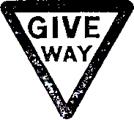
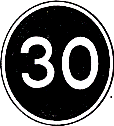 B. The most important part of the Highway Code is the traffic signs. But can you recognize them? Check your knowledge! Match the captions to the signs.
B. The most important part of the Highway Code is the traffic signs. But can you recognize them? Check your knowledge! Match the captions to the signs.

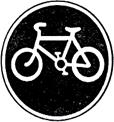

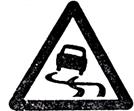
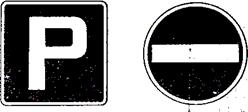
1. No entry 5. One-way traffic
2. Minimum speed limit 6. Double bend
3. Parking place 7. Route for cyclists
4. Slippery road 8. Give way
· In your home country, do you have the above sings?
· Do you have some other signs, which are specific to your country?
C. Now work in pairs. Student A draws a traffic sign, Student B tries to name it. Then it is Student B’s turn to draw a sign. Keep changing roles.
